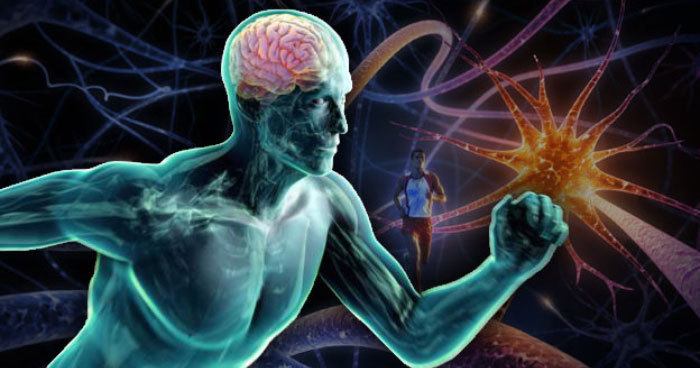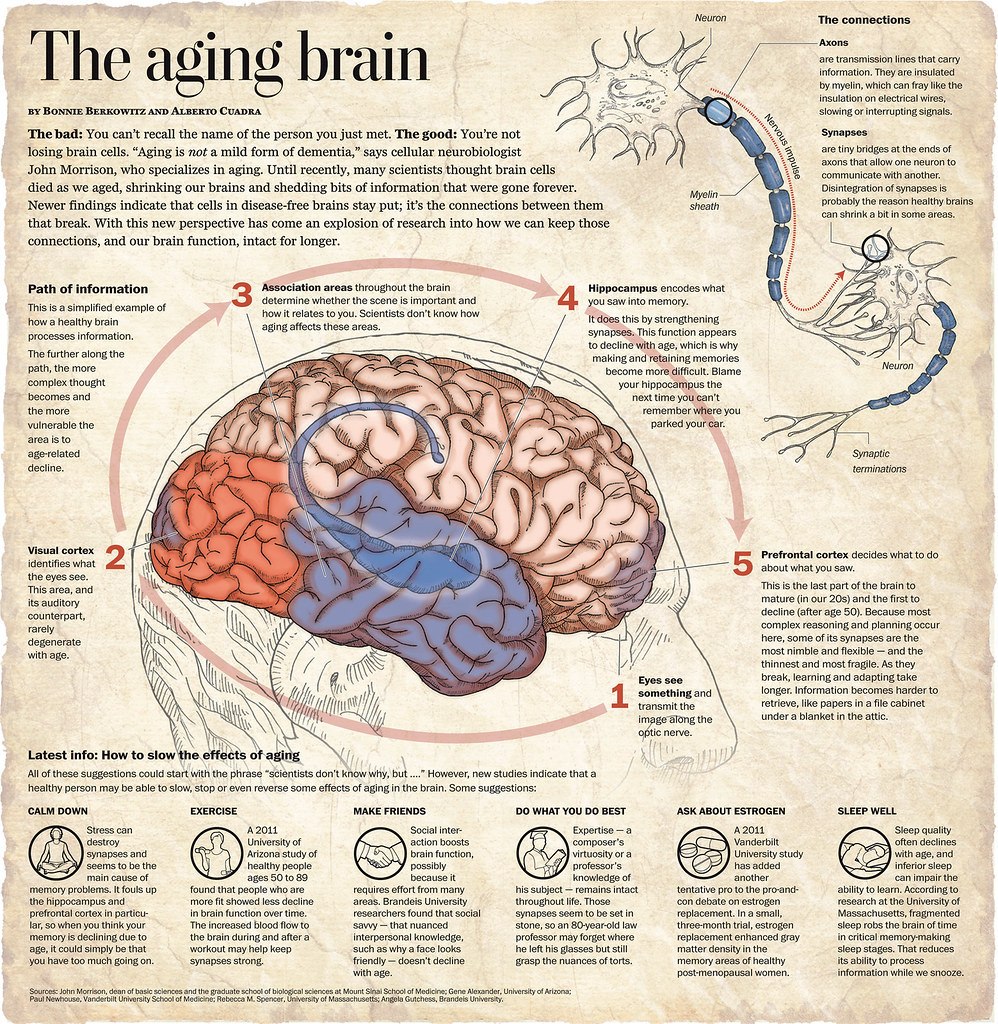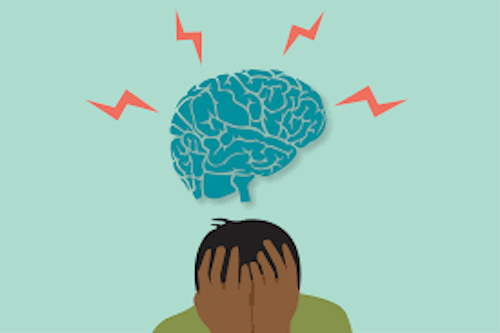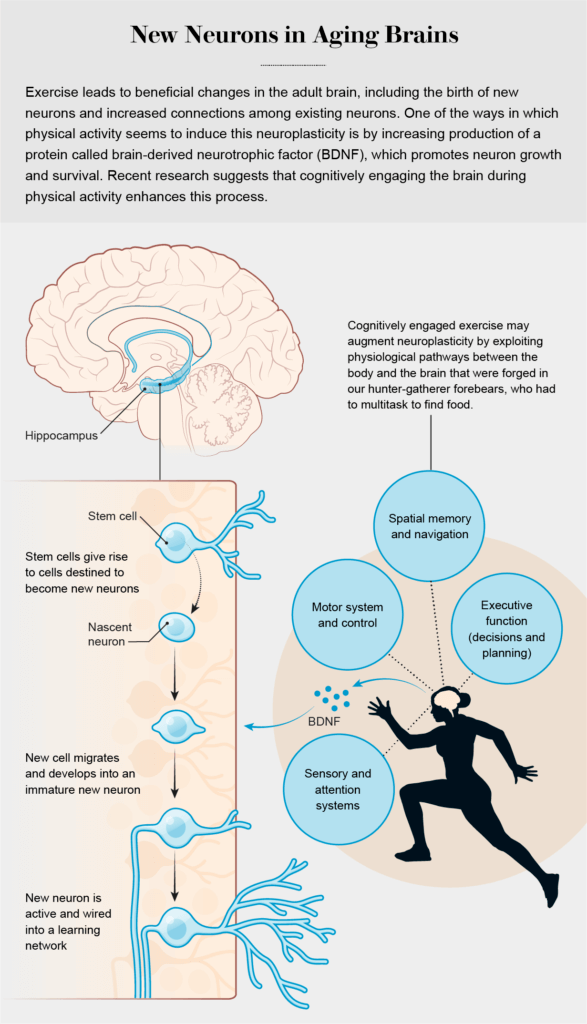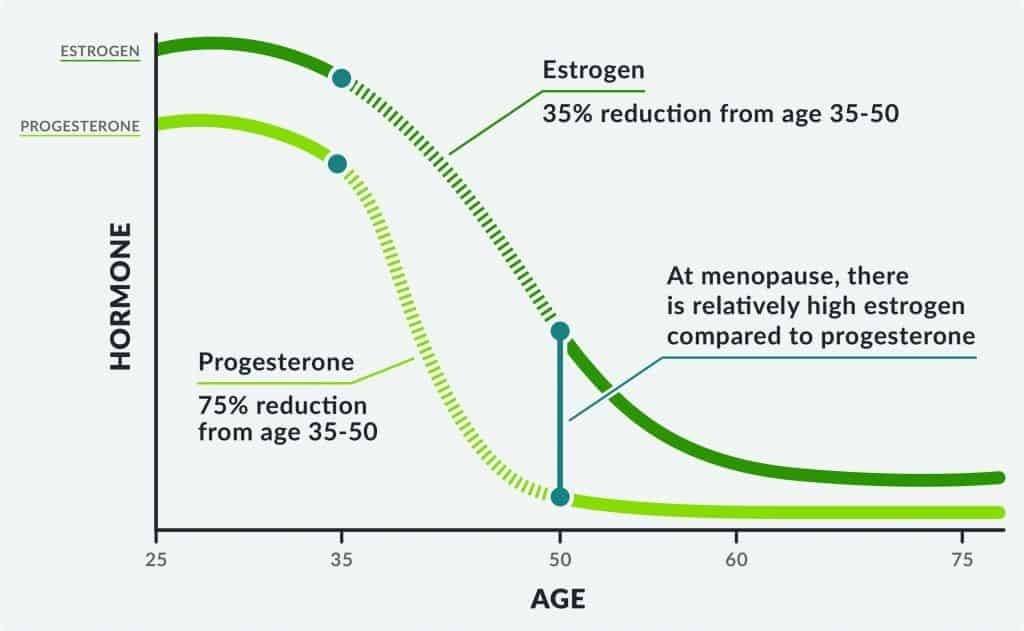Age-proof Your Brain: The Longevity Mindset, Part 1
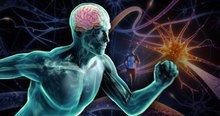
Age-proof your brain! That’s step #1 in a four-step process of establishing the Longevity Mindset, because without a healthy brain, there’s no you.
Age-proof Your Brain is part of the Longevity Mindset, one of five modules from the "age-proof" online video course I'm sharing as I develop it, sans the video. If you're not already a Subscriber, click here to be notified when the course goes live.
To age-proof your brain is to give yourself a very good chance at extending your healthspan, possibly even your lifespan. The reason is simple: your body can’t thrive without a well-functioning brain. And unfortunately, like everything in our body our brain itself, and how it functions, degrades as we age.
In this post, I reveal what you can do to age-proof your brain. As you’ll soon see, maintaining and age-proof brain is largely within your span of control, and it’s the first thing you’ve got to get right to create a longevity mindset.
There are four parts to the puzzle of developing the longevity mindset, beginning with Part 1 of this four-part series on the Longevity Mindset, the Age-proof Brain.
- The Age-proof Brain provides the physical capacity (here in Part 1)
- Mindful Intention sets the stage (Part 2)
- Habit making guides your actions (Part 3)
- Meditation keeps your clear (Part 4)
Think of the brain as a physical radio and the mind as the signals the radio can both receive and send. Mindful intention then is tuning in the signals you want the radio to receive and send; habit making enables the consistent attention to the tuning; and mediation clears away the static in order to make the signal strong.
Over the course of this four-part series about the Longevity Mindset, we’ll look at each of these and examine how you can optimize them.
Age-proof Your Brain — The Challenge
The one thing we tend to fear the most about getting old is to lose our minds due to cognitive decline. Some degree of cognitive impairment happens to most people as they get older, but like so much age-related physiological degradation, we can push back and slow the rate of decline.
If you want to maintain a healthy mind as you age, you must age-proof your brain.
Think of the brain as a radio, and the mind as the radio waves it broadcasts and receives. If the radio gets broken, so do the radio waves. The radio becomes pretty much useless if it can’t, in effect, communicate.
Of course, humans still have value even if our minds become compromised, but no one wants that experience. No one wants to experience cognitive decline, be it dementia, or the dreaded Alzheimer’s.
The problem with the aging brain is that it begins to shrink, just like our muscles, or even our height.
Brain-scan technology shows that the brain shrinks as we age, and nerve tracts in the brain shrivel. This makes the cerebrospinal fluid cavities larger and leaves gaping holes in the brain [1].

Brain scans from a 38-year-old, left, and a 73-year-old. Darker areas are where cerebral spinal fluid is filling the empty spaces created by a shrinking,
aging brain. NeuroscienceNews.com image is adapted from the UCLA news release.
Shriveling also happens in the neuron terminal branches that form the contact points among neurons. Some people may lose 40% or more of dopamine neurons causing Parkinson’s disease [2]. But well before Parkinson’s might set in, reduced dopamine can be a problem.
Dopamine is known as the feel-good neurotransmitter—a chemical that ferries information between neurons. The brain releases it when we eat food that we crave or while we have sex, contributing to feelings of pleasure and satisfaction as part of the reward system. This important neurochemical boosts mood, motivation, and attention, and helps regulate movement, learning and emotional responses.
A likely cause of mental decline in most people is diminished blood flow in small vessels that are easily clogged by cholesterol and fats, or ruptured by high blood pressure. These undetected “mini-strokes” are probably quite common as we age, yet they cause cumulative, progressive damage.
And I might as well point out here that cumulative, progressive damage is about the simplest yet most spot-on description of aging. A common theme running through the various aging interventions is how to slow down that damage, or even reverse it.
For instance, a source of damage to the brain in addition to diminished blood flow is the lifetime cumulative effect of oxidative free radicals that result from energy metabolism. The brain consumes about 20% of all the body’s oxygen, even though it only weighs about 3.5 pounds. We want to diminish the brain’s vulnerability to free radical damage through diet and some supplementation, which I’ll soon address.
If you fear what aging can do to your brain, know that a decline in brain function is not inevitable, at least for people who stay healthy and mentally active. Research shows, for instance, that a lifetime of vigorous learning helps prevent or delay Alzheimer’s disease [2].
Some studies show that one-third of older adults struggle with declarative memory — that is, memories of facts or events that the brain has stored and can retrieve. Other studies indicate that one-fifth (20%) of 70-year-olds perform cognitive tests just as well as people aged 20 [3].
Which group do you want to be in?
Many notable people chose to be in the 20th percentile group:
- The great Russian writer Leo Tolstoy learned to ride a bicycle at 67.
- Queen Victoria began learning Hindustani at 68.
- Giuseppe Verdi was still composing operas in his 80s.
- Somerset Maugham wrote his last book at 84.
- Frank Lloyd Wright designed his last building at 89.
- In their 90s, Robert Frost was writing poems and George Bernard Shaw was writing plays, Georgia O’Keefe was painting pictures, and Pablo Casals was playing cello.
- Oliver Wendell Holmes was still dominating the Supreme Court until he retired at 91.
- Nobel Laureate Linus Pauling was actively publishing just before his death at age 93.
- Orchestra conductor Leopold Stokowski recorded 20 albums in his 90s and signed a six-year contract at 96.
Obviously, the age-proof brains of those luminaries were producing strong, clear signals well into what we consider old age. And so can you if you keep yourself engaged in learning new things, and do the following, as I describe below:
- Lower stress
- Frequent exercise
- Mental engagement
- Social engagement
- Restorative sleep
- Balanced estrogen (for women)
Tap Down the Stress
Stress can destroy synapses, and seem to be the main cause of memory problems. It fouls up the hippocampus and prefrontal cortex, so when you think your memory is declining due to age, it could simply be that you have too much going on.
It’s not just the dramatic, stressful events in life that exact their toll on the aging brain, but rather the many events of daily life that elevate and sustain activities of physiological systems and cause sleep deprivation, overeating, and other health-damaging behaviors, producing the feeling of being “stressed out.”
Over time, this chronic stress creates wear and tear on the body, refereed to as “allostatic load.” As described in this 2006 study, allostatic load reflects not only the impact of life experiences, but also the genetic load; individual lifestyle habits reflecting items such as diet, exercise, and substance abuse; and developmental experiences that set life-long patterns of behavior and physiological reactivity.
The brain is the key organ of stress, allostasis and allostatic load, because it determines what is threatening and therefore stressful — and also determines the physiological and behavioral responses. Brain regions such as the hippocampus, amygdala, and prefrontal cortex respond to acute and chronic stress by undergoing structural remodeling, which alters behavioral and physiological responses.

Central role of the brain in allostasis and the behavioral and physiological response to stressors. Reproduced from reference 1: McEwen BS. Protective and damaging effects of stress mediators. N Engl J Med. 1998;338:171-179. Copyright © Massachusetts Medical Society 1998.
What you can do to alleviate chronic stress and reduce allostatic load is to:
- Be mindful of what stresses you and work to reduce them
- Exercise frequently
- Meditate daily
- Supplement with adaptogens
I cover mindfulness and meditation, respectively, in Parts 2 and 4 of this four-part series, and exercise below, so that leaves adaptogens.
What are adaptogens?
Adaptogens are natural substances, typically herbs, that work as stress response modifiers. They act to reduce the stress response and return systems back to “normal”, or as Wikipedia puts it:
Adaptogens are used in herbal medicine for the claimed stabilization of physiological processes and promotion of homeostasis.
“Homeostasis” is is the state of steady internal, physical, and chemical conditions maintained by living systems to affect optimal functioning for the organism. Two examples are (1) your body working to maintain its internal temperature between 97.7–98.6 °F (36.5–37 °C); and (2) your body working to maintain a neutral, normal pH from 6.5 to 7.5.
So, adaptogens are compounds that can help bring stress down to its normal, balanced, homestatic range.
There are many adaptogens to choose from. Three that are widely available and that can help you reduce your stress and chronic inflammation are:
- Red ginseng,
- Ashwagandha, and
- Rhodiola.
You may read the details about these in my post Reduce Chronic Inflammation With A Daily Mindfulness Practice and 3 Adaptogens, but here’s the bottom line:
Red Ginseng delays the onset of and reduces the severity of the “alarm phase” of the body’s short- and long-term responses to stress. This is referring to the fight or flight response. Red ginseng has anti-inflammatory actions in various inflammatory conditions ranging from asthma to autoimmune diseases to colitis, which is inflammation of the colon or the large intestine [4].
Ashwagandha has been called the king of Ayurvedic herbs. Ayurveda is a branch of medicine originating from India. This herb is revered because it seems to confer many health benefits. It may, for instance modestly enhance strength performance, improve glucose metabolism, and increase testosterone levels [5]. But our interest in ashwagandha here is for its potent anti-stress effects in the context of chronic stress and anxiety disorders. And it seems to do just that.
A study on patients exhibiting chronic stress showed that taking two capsules per day of 300 mg of high-concentration full-spectrum extract from the root of the Ashwagandha plant for 60 days brought down their cortisol levels by 28%.
Cortisol is a steroid hormone produced by many animals, such as us, by the adrenal cortex in the adrenal gland. Cortisol is triggered when our brain perceives a threat, often referred to as “flight or flight”, and that’s pretty much the only time you want cortisol to be raging in order to help you stand your ground and fight or run away. If neither of those two things are happening, elevated cortisol can have several determinant effects on the body and brain, such as creating digestive issues, weight fluctuation, decreased immunity/increased inflammation, restless sleep, and even promote wrinkles and acne.
Rhodiola is the last adaptogen of the three for you to consider as a stress and chronic inflammation reducer. It appears to be able to significantly reduce the fatigue and ‘burnout’ that come from stress and anxiety. Numerous trials suggest meaningful effects, particularly in people with stress and anxiety issues [5].
Exercise Frequently
As reported by the Stanford Medicine journal:
By analyzing aerobic fitness and neural differences, researchers at the University of Arizona found a clear relationship between exercise and healthier aging brains, they reported in a new study. The more physically fit the elderly person they studied, the fewer age-related brain changes the researchers could find. In all, they studied 58 men and 65 women between 50 and 89 years old, matching patterns of neural activation against performance on treadmill tests.
Clearly, people who are more fit exhibit a lower decline in brain function over as they age. It’s thought that, in part, this is due to the increase blood flow to the brain during and after a workout may help keep synapses strong, but exactly why exercise is so beneficial to the aging brain is yet unclear.
A 2013 meta-study of research on healthy older adults, frail patients, and persons suffering from mild cognitive impairment and dementia concludes that “… we still do not understand how physical activity impacts the rate of cognitive decline. One major issue is whether physical activity broadly defined (i.e., activity that is part of one’s daily life involving bodily movements and the use of skeletal muscles) or structured exercise (i.e., physical activity that is planned, structured… to improve physical fitness) leads to the same benefits in preventing age-related cognitive decline.”
What the researchers are saying is that it’s not currently known just what specific type of physical activity/exercise is most essential to age-proof your brain, but that moving your body frequently and with some vigor is necessary.
The bottom line: At minimum, live an active life that consists of plenty of movement throughout the day; but better yet, get on a consistent exercise program.
Three exercise posts to get you going:
- Why You Must Exercise for Longevity and How To Do It
- The Minimum Exercise That Adds Years To Your Life
- The Functionally Fit Fast Workout — Strong, Enduring, Mobile
Keep Mentally Active
If you’re still doing work that requires some intellectually heft, keep at it. What I mean by that is to keep doing what you do best to keep your brain young.
A composer’s virtuosity or a professor’s knowledge of his subject, remains intact throughout life. These synapses seem to be set in stone, so an 80-year-old law professor may forget, where he left his glasses, but still grasp the nuance of torts.
If your work doesn’t stimulate your noggin, find other pursuits that will. Number 1 in the list of 12 ways to keep your brain young, says Harvard Health, is to “get mental stimulation”:
“Through research with mice and humans, scientists have found that brainy activities stimulate new connections between nerve cells and may even help the brain generate new cells, developing neurological “plasticity” and building up a functional reserve that provides a hedge against future cell loss.”
Just about any mentally stimulating activity should help to age-proof your brain. Read, take courses, try “mental gymnastics,” such as word puzzles or math problems. Experiment with things that require manual dexterity as well as mental effort, such as drawing, painting, and other crafts.
A few Baby Boomer friends of mine are members of a book club. They read non fiction book every two weeks and meet to discuss it. Typically, these “discussions” become vigorous debates, and as you may know from experience, you need those synapses firing to hold your own in a debate with well-informed opponents.
Be Social
An article from Harvard Health can once again illuminates how to keep our brains healthy and youthful.
Research keeps affirming that strong social ties are important for brain health. Socializing can stimulate attention and memory, and help to strengthen neural networks.
Scientists have found that people with strong social ties are less likely to experience cognitive decline than people who spend most of their time alone. One large study of some 12,000 participants, suggests that when people are lonely, their risk of dementia rises by as much as 40%.
Here’s what to do:
Rekindle old friendships
Reconnect with good friends you’ve lost touch with over the years. You have a shared history, so it’s usually a simple matter to reengage. Social media can be an easy way to find people from your past to re-establish a lapsed friendship. Or, scan your address book and reach out by phone or email.
Go for quality, not quantity
In graduate school, a friend of mine who is 5’11” used to good-naturedly interrupt my conversations with comely coeds, suggesting to the women that they should go for quality (him) rather than quantity (I’m 6’4″). That appeal didn’t seem to have immediate effect, but 40 years later, he has a wife and three kids, and I don’t. So, dear reader, go for quality relationships rather than stressful interpersonal relationships that can diminish your health.
A 2021 Journal of the American Heart Association study found that women who reported high levels of social strain were more likely to experience serious heart problems over the course of 15 years than those who did not. This study didn’t look specifically at brain health, but cardiovascular problems and cognitive decline share many of the same risk factors. Other studies have linked turbulent relationships with other physical or mental health problems.
The bottom line: invest in high-quality relationships that relax and and fulfill you.
Consider a range of ways to connect
If you can’t get out and about, use other strategies to connect with friends and family. Yes, there’s video chat apps, texting, email, etc. Although not as good as a face-to-face conversation, such tech-enabled substitutes are better than staring at the wall.
Many libraries and communities offer free or low-cost social opportunities to meet up online, such as book groups, town-wide discussions, and creative courses. A local library or senior center may steer you to a range of resources like these.
Ultimately, the more open you are to new experiences and new people, the more likely it is that you will make connections with others that can help you maintain good health well into the future.
For tips on how to get some good, restorative sleep, check out my post,7 Sleeping Tips For Your Ultimate Rest and Restoration, where I report on some useful information about the use of melatonin to help you get restful sleep.
Get Restorative Sleep
A study done by UCLA researchers discovered that just a single night of insufficient sleep can make an older adults’ cells age quicker. This might not seem like a big deal, but it has the potential to bring on a lot of other diseases, such as multiple sclerosis, heart disease and cancer.
A 2020 meta-study said that “based on the existing literature, we conclude that sleep problems are associated with cognition, cognitive changes over time and incident dementia as well… We could speculate that sleep problems are causing cognitive decline, however, reverse causality could be also true; sleep dysregulation could be an early symptom of an upcoming neurodegeneration”.
The bottom line is that you must be able to sleep soundly, preferably between seven and nine hours during the night. If your sleep is consistently being disrupted, check with your doctor about what might be making this happen. About 20% of the U.S. adults suffer from sleep apnea, so if you regularly wake up tired, check for that.
For some tips on how to get restful sleep, check out my post, 7 Sleeping Tips For Your Ultimate Rest and Restoration, which includes some useful information on how to use melatonin.
Check Your Estrogen
Ladies, it’s a good idea to know your estrogen level, particularly as it relates to progesterone.
As reported in the LA Times, a 2011 Vanderbilt University study has added another tentative pro to the pro-estrogen debate on estrogen replacement. In a small three month trial, estrogen replacement enhanced gray matter density in the memory areas of healthy postmenopausal women.
The study, presented by Dr. Paul Newhouse of Vanderbilt University, divided 24 healthy postmenopausal women with an average age of 59 into two groups: the first got 1 milligram of (a synthesized version of estrogen) everyday for three months; the second got a daily dose of placebo.
“Compared with the women who took a placebo for three months, those who got estradiol had significantly greater gray matter density in three important areas — the parietal temporal and prefrontal cortices — on both sides of the brain. While those regions have a wide range of functions, they are key nodes in the networks that govern attention, episodic memory (memory for events and experiences) and working — or short term memory.”
Estrogen-induced changes in the brain “may be important in preserving cognitive function, especially in the early menopausal period,” said Dr. Newhouse, who acknowledged that estrogen treatment will probably remain controversial despite its promising cognitive benefits.
If curious, you can test yourself for estrogen deficiency here, although if serious about this, consult with an endocrinologist.
Your Age-proof Brain Takeaway
Keeping your brain youthful is the first thing to do to slow down the aging process, because nothing else matters if your noggin ain’t working.
To age-proof your brain, make sure these lifestyle factors are in place, and are regularly tuned:
- Low stress
- Frequent exercise
- Mental engagement
- Social engagement
- Restorative sleep
- Balanced estrogen (for women)
Go to Part 2
Last Updated on February 7, 2024 by Joe Garma

